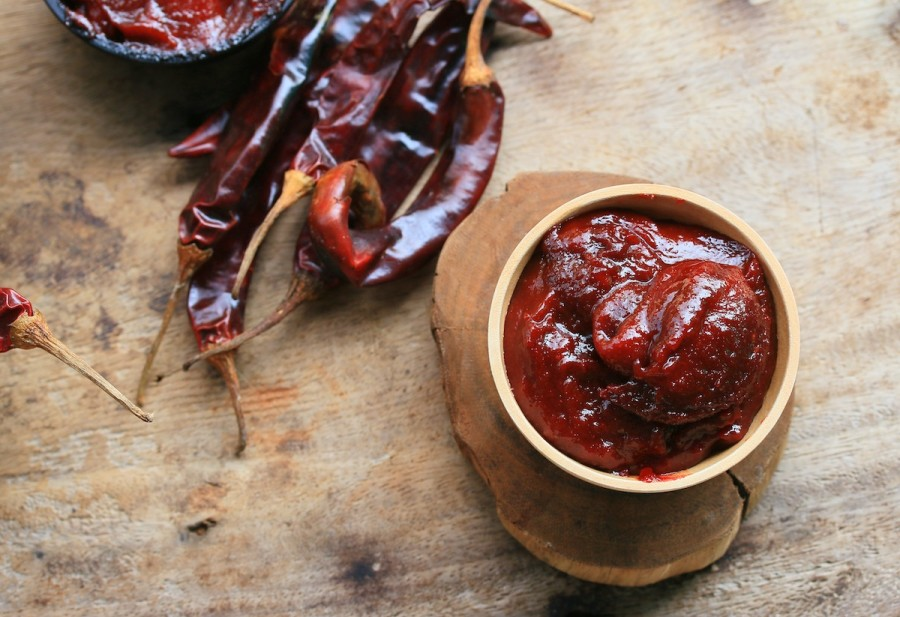The wide variety of Korean delicacies have gain lots of love from foreigners and make locals crave their food whenever they go overseas. The secret behind these delicious dishes are the various kind of sauces that Koreans use in making their dishes. Here are a list of different kinds of sauces used in Korean cooking.
1. 된장 (doen-jang)


Doen-jang is fermented (발효) soybean paste that is made of soybeans and salt (소금). It is somehow similar with the Japanese miso but doen-jang rougher (거친) compared to them. This sauce is often used in soups (국) and stews.
2. 고추장 (go-chu-jang)


Go-chu-jang is a kind of chili paste that is thick (진한) and little sticky (찰기가 있는). It is one of the most necessary (필수) sauces (소스) in Korean cooking. This sauce is primarily made with chilies, soybeans and glutinous rice (찹쌀). Although the redness of the sauce may make it seem really spicy but it actually has a twist (반전) of sweetness (단맛) in it.
3. 쌈장 (ssam-jang)


This sauce is a mixture (조합) of doen-jang and go-chu-jang seasoned with garlic (마늘), ginger (생강), sesame oil along with other spices (향신료). This sauce is usually eaten together with ssam 쌈 which is the Korean lettuce wrap where you wrap meat with other sides in lettuce (상추).
4. 간장 (gan-jang)


Gan-jang is light soy sauce that is similar to the Chinese soy sauce (간장) but it has a milder (약한) flavor but is darker and sweeter. It is used as a dipping sauce more often. There is another soy sauce called guk-gan-jang (국간장) that is used for cooking as it’s more flavorful because it has brine (소금물).
5. 춘장 (chun-jang)


This is the sauce used to make the Koreans favorite jja-jang-myeon (짜장면). Chun-jang is the black bean sauce made from fermented soybean which has a slight (약간) bitter (쓴) and salty taste. However, some chefs like to add sugar (설탕) in it to balance (균형) out the taste.
6. 새우젓 (sae-woo-jeot)


Sae-woo-jeot is salted fermented (발효된) shrimp (새우), often used to add saltiness to the dish (요리). It is made from very tiny shrimps anyone ever seen. Sae-woo-jeot is used in mostly in Kimchi (김치) to let the Kimchi ferment. It is not the same as fish pastes used in Asian cooking.
7. 멸치액젓 (myeol-chi-aek-jeot)


This is anchovy (멸치) sauce made from fermented anchovies, it is somehow the Korean version of fish (생선) sauce. This sauce can be used to season soup or stews if you happen to run out of guk-gan-jang (국간장). Myeol-chi-aek-jeot is another sauce that can’t be left out while making Kimchi.





























Responses